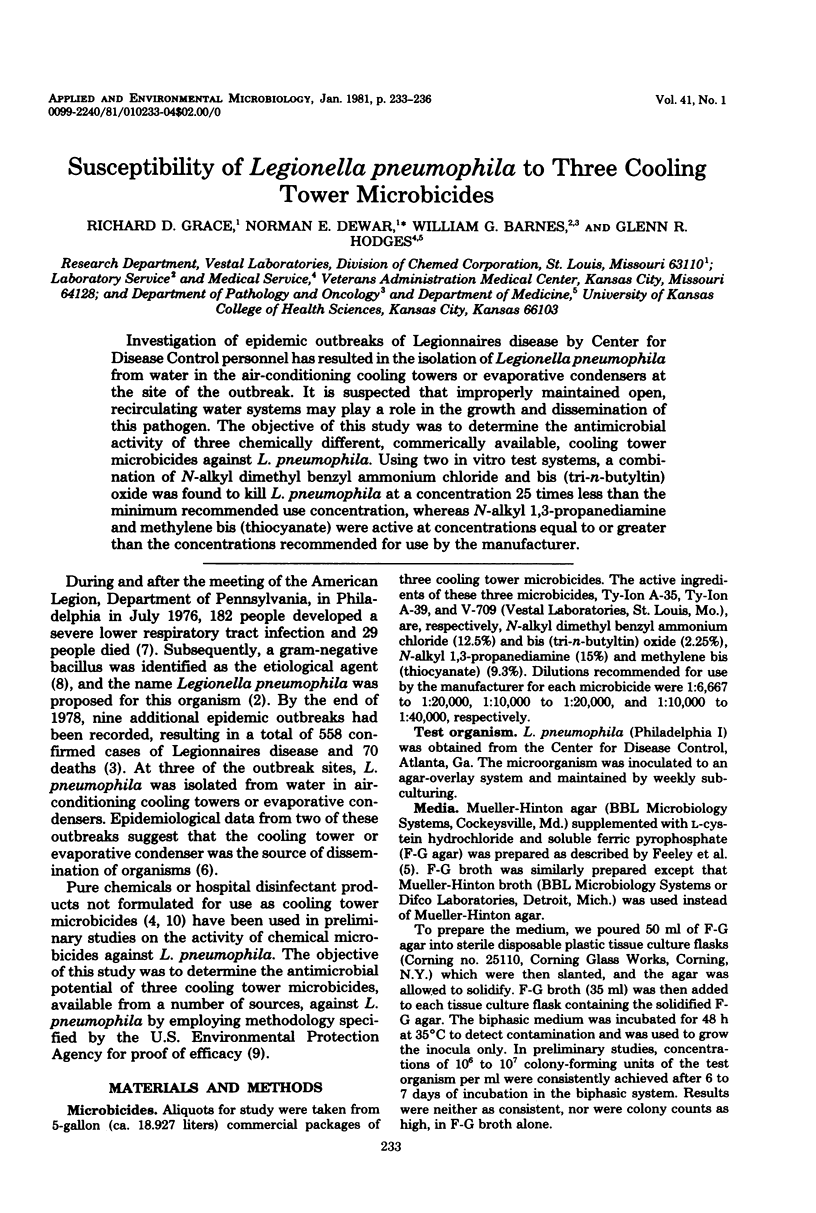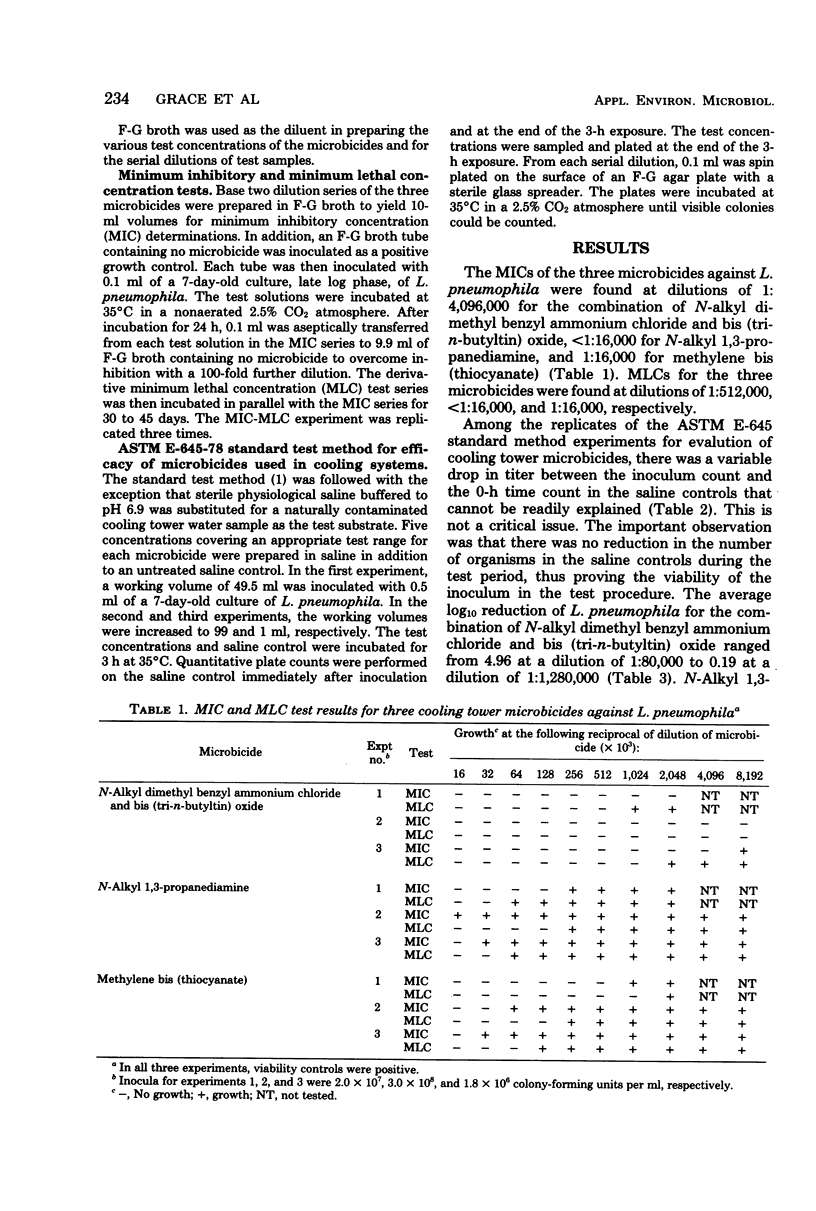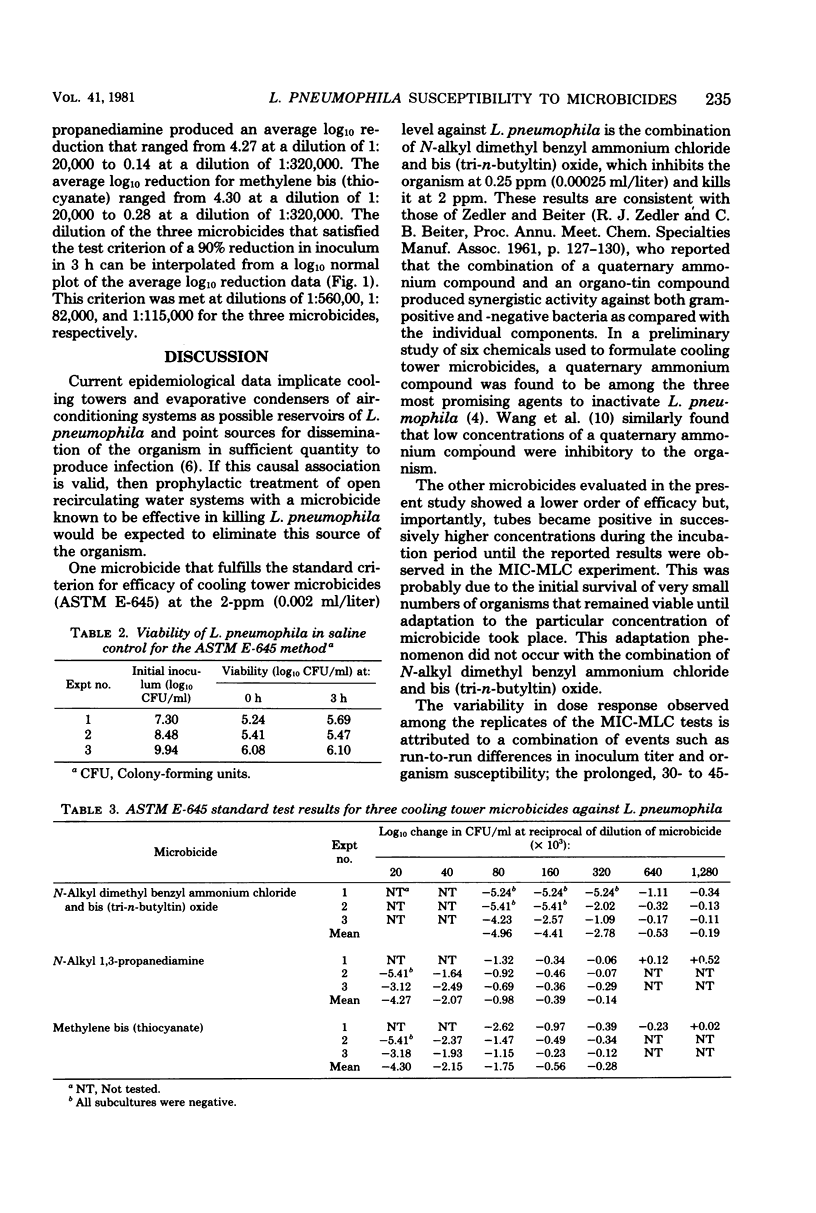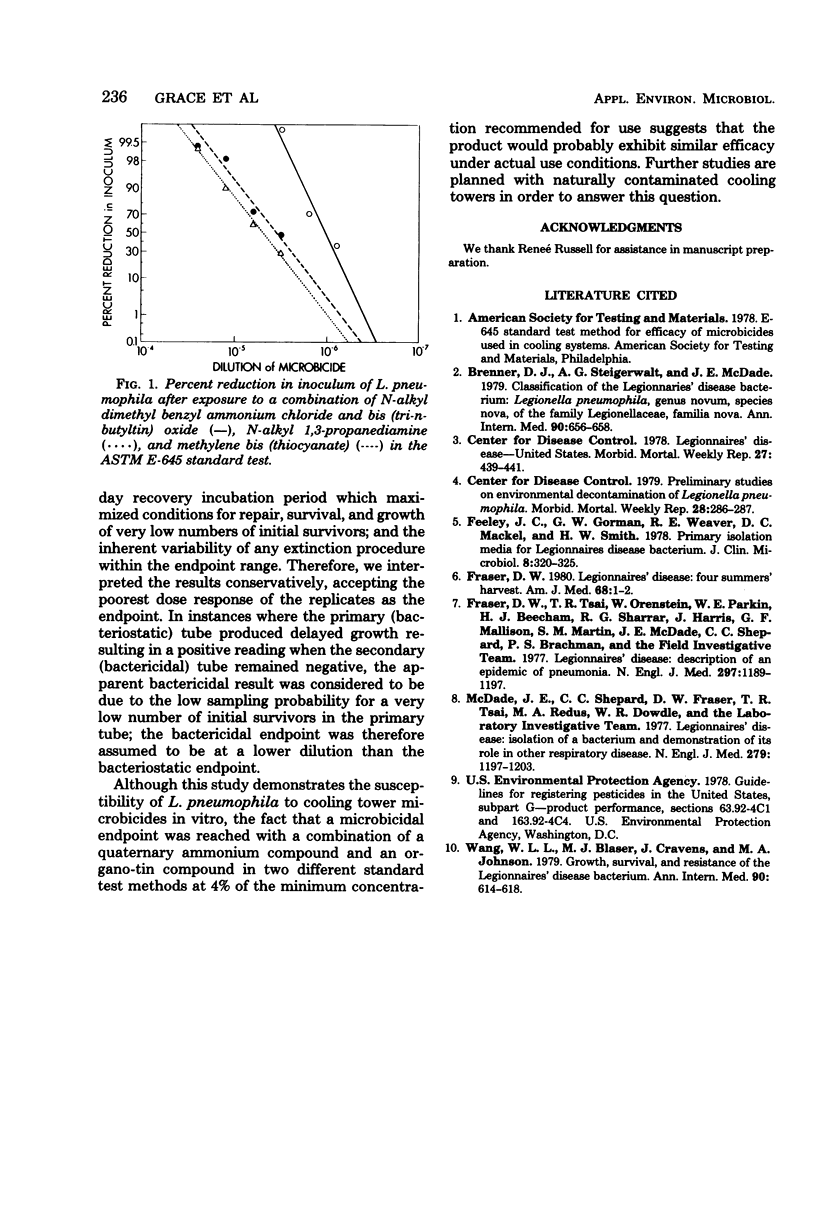Abstract
Investigation of epidemic outbreaks of Legionnaires disease by Center for Disease Control personnel has resulted in the isolation of Legionella pneumophila from water in the air-conditioning cooling towers or evaporative condensers at the site of the outbreak. It is suspected that improperly maintained open, recirculating water systems may play a role in the growth and dissemination of this pathogen. The objective of this study was to determine the antimicrobial activity of three chemically different, commercially available, cooling tower microbicides against L. pneumophila. Using two in vitro test systems, a combination of N-alkyl dimethyl benzyl ammonium chloride and bis (tri-n-butyltin) oxide was found to kill L. pneumophila at a concentration 25 times less than the minimum recommended use concentration, whereas N-alkyl 1,3-propanediamine and methylene bis (thiocyanate) were active at concentrations equal to or greater than the concentrations recommended for use by the manufacturer.
Full text
PDF



Selected References
These references are in PubMed. This may not be the complete list of references from this article.
- Brenner D. J., Steigerwalt A. G., McDade J. E. Classification of the Legionnaires' disease bacterium: Legionella pneumophila, genus novum, species nova, of the family Legionellaceae, familia nova. Ann Intern Med. 1979 Apr;90(4):656–658. doi: 10.7326/0003-4819-90-4-656. [DOI] [PubMed] [Google Scholar]
- Feeley J. C., Gorman G. W., Weaver R. E., Mackel D. C., Smith H. W. Primary isolation media for Legionnaires disease bacterium. J Clin Microbiol. 1978 Sep;8(3):320–325. doi: 10.1128/jcm.8.3.320-325.1978. [DOI] [PMC free article] [PubMed] [Google Scholar]
- Fraser D. W. Legionnaires' disease: four summers' harvest. Am J Med. 1980 Jan;68(1):1–2. doi: 10.1016/0002-9343(80)90151-5. [DOI] [PubMed] [Google Scholar]
- Fraser D. W., Tsai T. R., Orenstein W., Parkin W. E., Beecham H. J., Sharrar R. G., Harris J., Mallison G. F., Martin S. M., McDade J. E. Legionnaires' disease: description of an epidemic of pneumonia. N Engl J Med. 1977 Dec 1;297(22):1189–1197. doi: 10.1056/NEJM197712012972201. [DOI] [PubMed] [Google Scholar]
- McDade J. E., Shepard C. C., Fraser D. W., Tsai T. R., Redus M. A., Dowdle W. R. Legionnaires' disease: isolation of a bacterium and demonstration of its role in other respiratory disease. N Engl J Med. 1977 Dec 1;297(22):1197–1203. doi: 10.1056/NEJM197712012972202. [DOI] [PubMed] [Google Scholar]
- Wang W. L., Blaser M. J., Cravens J., Johnson M. A. Growth, survival, and resistance of the Legionnaires' disease bacterium. Ann Intern Med. 1979 Apr;90(4):614–618. doi: 10.7326/0003-4819-90-4-614. [DOI] [PubMed] [Google Scholar]


